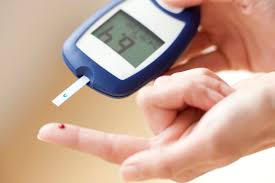If you are selective about the type of chocolate you purchase, you might be gaining quite a few health benefits. Dark chocolate, made with high content of cocoa has actual nutritional value. For instance, it has fiber, iron, copper, zinc and several other minerals. It’s also loaded with antioxidants and can have more than blueberries or acai berries.
The flavonoids that are in dark chocolate stimulate the endothelium which is the lining inside arteries. When stimulated, they start to produce nitric oxide which causes the arteries to relax. This means lower blood pressure and increased blood flow. Some studies are showing that dark chocolate (made with real cocoa) can help reduce the risk of cardiovascular diseases. It can also improve brain function because of the increased blood flow to the brain. Cocoa might improve cognitive function for the elderly as well as improving verbal fluency. This may mean it helps prevent Alzheimer’s or dementia.
There have also been a few studies that have shown dark chocolate may reduce insulin levels which means it might be beneficial for diabetics and helping to control blood sugars. Participants who ate dark chocolate for 15 days saw insulin drop by about half. If insulin sensitivity can be controlled, it may be possible to prevent type 2 diabetes. Chocolate might be helpful in controlling insulin levels.
This post was most recently updated on December 4th, 2016
Millions of consumers want to make more healthful food choices. And yet the search for better products can be frustrating.
Look on any grocery shelf, and you will see a wide range of healthful claims. Some say their peanut butter is “all natural.” Others boast of “organic” baby food, or “non-GMO” soups.
All of these different declarations can be confusing, says Courtney Pineau, associate director of the Non-GMO Project, a nonprofit based in Bellingham, Wash., that labels foods as “non-GMO” if they meet certain standards.
“It can often be difficult to discern the meaningfulness and integrity of their claims,” she says.
You will have much better success in choosing healthful foods if you understand the meaning of three key terms – natural, organic and non-GMO – and what they really signify.
Defining 3 key terms
The three terms sound similar, but actually are distinct:
Natural. Seeing this label affixed to your food seems like it would be a good thing. From the craze for kale to the popularity of the Paleo diet, it seems everyone is trying to get their food back to a “natural” state.
But Consumer Reports says the “natural” label does not indicate that the food meets any stringent government or third-party standards and is “essentially meaningless.”
And yet, a Consumer Reports survey found that more than 75 percent of people believe “natural” has a substantive – and positive – meaning, such as that the food has no artificial ingredients or colors.
Consumer Reports is so concerned about this misconception that the organization has pushed to have the label banned.
Organic. The news is a little better with this label. Consumer Reports found that two-thirds of people believe “organic” is applied to foods that were produced without using toxic pesticides or antibiotics. And for the most part, that is true, the organization says.
Consumer Reports notes that “by law, organic foods cannot contain synthetic fertilizers, industrial pesticides, antibiotics, growth hormones or artificial food ingredients.”
However, there are reasons for concern. Consumer Reports says that the U.S. Department of Agriculture (USDA) has a list of exempted ingredients that can be used when producing “organic” foods.
Once an ingredient makes this list, it remains there for five years – or even longer. Dozens of ingredients – from alcohols and ozone gas, to potassium bicarbonate and sulfurous acid – have appeared on this list.
In addition, products need only be made up of at least 95 percent organic ingredients to carry the organic seal from the USDA.
Non-GMO. Americans are concerned about genetically modified organisms – or GMOs – in their food. According to the Consumer Reports survey, nearly 75 percent of consumers believe it is crucial to avoid foods with GMOs, and 90 percent believe foods with GMOs should be clearly labeled as such and required to meet safety standards.
And yet, the Food and Drug Administration has no such requirements.
How to find the most healthful foods
So, what can consumers do to ensure they are eating the most healthful foods?
Buying organic is a good first step. Pineau notes that GMOs are prohibited in organic products. That means “farmers can’t use GMO seeds, animals can’t consume GMO feed, and end products can’t contain GMO ingredients,” she says.
However, as noted above, some products that claim organic status are not always what they appear to be. For that reason, Organic Lifestyle magazine recommends that you buy products that have a label indicating they are “100% organic.”
“Only products made entirely with certified organic ingredients and methods can be labeled ‘100% organic,'” the magazine notes.
And if you want to go the extra mile in terms of food healthfulness, look for the “Non-GMO Project Verified” seal and its butterfly symbol. The Non-GMO Project has verified nearly 35,000 products from more than 1,900 brands.
Greek Yogurt
Greek yogurt has almost twice as much protein as other yogurts. It takes longer to leave your stomach, keeping you satisfied longer. Plus, you burn more calories digesting protein than carbs. Choose nonfat, low-fat, and low-sugar types.
Quinoa
Quinoa (pronounced keen-wa) is a nutritional all-star that belongs in your weight loss plan. This whole grain has 8 grams of hunger-busting protein and 5 grams of fiber in one cup, and you'll also get iron, zinc, selenium, and vitamin E. Quinoa is as easy to cook as rice. For a quick dinner, mix in some vegetables, nuts, or lean protein.
Cinnamon
Some studies suggest cinnamon may have a stabilizing effect on blood sugar levels. This could curb your appetite, particularly in people with type 2 diabetes. Nearly everyone can benefit from cinnamon in its traditional role. Stir some into your coffee, tea, or yogurt to add sweetness without adding calories.
Hot Peppers
Hot peppers have a flavorless chemical called capsaicin. It's more plentiful in habaneros, but jalapeños also have it. Capsaicin seems to curb appetite and speed up metabolism slightly, but only for a short time. It probably doesn't have a big impact on weight, unless you eat less food because it's spicy.
Berries
Like other fruits, berries are high in water and fiber, which can keep you full longer. They're also sweet, satisfying your sweet tooth for a fraction of the calories you would get from cookies or brownies. Blueberries are a good example because most stores carry them and they're loaded with antioxidants.
Raw Vegetables
Raw vegetables make an outstanding snack. They satisfy the desire to crunch, they're full of water to help you feel full, and they're low in calories. Half a cup of diced celery has just 8 calories. Coat celery with a little peanut butter or dunking carrots in salsa. When you're in the mood for chips and dip, replace the chips with raw veggies.
Sweet Potatoes
Think of the typical toppings on your baked potato -- butter, sour cream, maybe cheese and bacon bits. If you substitute a sweet potato, you might not need any of that. Baked sweet potatoes are so full of flavor, they don't need a lot. This can save you loads of calories. As a bonus, sweet potatoes are packed with potassium, beta-carotene, vitamin C, and fiber.
Eggs
One egg has only 75 calories, plus 7 grams of protein along with other vital nutrients. Remember, your body will burn more calories digesting eggs than a carb-heavy breakfast. If you have high cholesterol, ask your doctors if you can have eggs. You may consider choosing egg whites, which are cholesterol-free.
Coffee
It sounds too good to be true: One of your favorite beverages may rev the metabolism and help you lose weight. Coffee does stimulate the metabolismm, but only a little. Don't count on this for weight loss, especially if you add calories with toppings.
Oatmeal
Oatmeal has three things going for it: fiber-rich whole-grain oats, lots of water, and it's hot. It's a very filling combination. Hot food takes longer to eat, and all that liquid and fiber will help you feel full longer. Avoid super-sugary oatmeal. Stirring in cinnamon or nutmeg will give you a sweet taste with less sugar.
Crispbreads
Whole-grain rye crackers, sometimes called crispbreads, offer a low-fat, fiber-packed alternative to traditional crackers. Research suggests people who replace refined grains with whole grains tend to have less belly fat. Whole grains also provide a richer assortment of plant nutrients. This doesn't just apply to crackers. You can get the same benefits by switching to whole-grain breads, cereals, and pastas.
Tabouli
A standout whole grain is bulgur wheat, the type found in tabouli. It's high in fiber and protein but low in fat and calories. That helps you fill up with a minimum of calories. It also tastes great. To turn this dish into a meal, you could add beans and stir in extra tomato, cucumber, and parsley.
Soup
Soup -- we're talking broth-based, not creamy -- has a lot going for it. It's full of water, which fills you up with the fewest possible calories. It's hot, which prevents you from eating too much. Have it before a meal, and soup can take up space that might have gone to higher-calorie foods. You can also make a satisfying, low-calorie meal out of soup alone by adding chicken, fish, cut-up vegetables, or beans.
Salad
Another way to fill up before a meal is by eating salad. Lettuce has plenty of water content to take up space in the stomach. That leaves less room for fattier foods that might come later in the meal. Make your salad interesting by adding a variety of fruits and vegetables or grated cheese. Be careful about dressing, which can add a lot of calories.
Vinegar
Dress your salad with oil and vinegar. It's easy to make and it's full of flavor that can make salad more satisfying -- and it has fewer calories than most pre-made dressings.
Nuts
Nuts are an excellent way to curb hunger between meals. They're high in protein, fiber, and heart-healthy fats. Studies suggest nuts can promote weight loss and improve cholesterol levels when eaten in moderation. They're also rich in calories, so limit your portions. If you have to get them out of their shell, you'll slow down and not eat as much.
Air-Popped Popcorn
Photo of pistachio nuts.
Three cups of plain, air-popped popcorn may seem like a lot, but you're not getting a lot of calories. All that air adds volume without adding fat or sugar.
Skim Milk
Skim milk provides plenty of protein, calcium, and vitamin D with none of the fat found in whole milk. And even though it's fat-free, skim milk can help you feel full. It takes longer to leave the stomach than drinks with less protein.
Lean Meat
You know that protein can keep you full longer and burn more calories during digestion. Choose your protein carefully. Dark meat tends to be high in fat, which could cancel out some of the benefits. Skinless chicken breast is a great choice. And some cuts of beef can make the grade. Flank steak, eye of round, and top sirloin are extra-lean with less than 4 grams of saturated fat per serving. Stick with a 3- to 4-ounce portion.
Fish
One of the best sources of protein is fish. Most fish is low in fat, and the exceptions usually have a good form of fat: omega-3 fatty acids. Omega-3s, which are found in salmon, herring, and other fatty fish, may help protect against heart disease and other chronic conditions.
Beans
Beans are a vegetable, a protein, and a great source of fiber. You feel full for very few calories. Open a can of garbanzo beans (aka chickpeas) and toss them into soup or salad, or mash them up to use as a dip. One cup packs 12.5 grams of fiber, just 4 grams of fat, and almost 15 grams of protein.
Diabetics need to keep their blood sugar levels under control. Uncontrolled blood sugar levels can trigger complications of diabetes. A diabetic may experience shifts on blood sugar levels many times. Controlling blood sugar levels is an essential part of diabetes. When blood sugar levels go uncontrolled and are high, it is called hyperglycemia. It should be controlled on time with urgent treatment. If left untreated it can cause emergencies and serious conditions like diabetic coma. There can be many reasons behind spike in blood sugar levels like doing the wrong physical activity, not taking proper diabetic medication, eating wrong food, illness and many more. There are some symptoms that one may experience when blood sugar levels are high. Understanding these symptoms can help in taking control of the situation on time.
Diabetes: High Blood Sugar levels Signs and Symptoms
1. Frequent urination
When you have high blood sugar you kidneys start to produce more urine to get rid of the excess urine. If you notice you have to go more frequently to the bathroom then you must check your blood sugar levels once. This will also increase your thirst and make you drink more water than usual.
2. Blurred vision
Spike in blood sugar levels can also affect your vision. You will notice that your vision may become blurry. This happens due to swollen lenses from fluid leaking. You may find difficulty in concentrating. It can also contribute to frequent headaches and problems while studying or driving.
3. Slow healing of wounds
When blood sugar levels are high it takes a long time for the wounds to heal. Uncontrolled blood sugar levels cause nerve damage which delays the healing process as it impairs blood circulation. Cuts, bruises or any other wound will take longer time to heal than usual. Diabetic foot is another condition that happens due to high blood sugar levels. You also need to take care of your feet as well.
4. Change in skin
High blood sugar levels can affect your skin as well. You may notice change in skin colour and cause thick areas of skin. If you are a diabetic you need to control blood sugar levels. It can also cause dryness, itchiness, discolouration or blisters. If you notice change in your skin then you must consult your doctor.
5. Dental issues
High blood sugar levels can also affect your blood sugar levels. It can majorly cause gum problems. You may experience red and inflamed gums. You may also notice blood while brushing your teeth. You must check with your doctor if you any kind of dental issue for a long time.
The foods that we eat on a daily basis have an impact on our body system in some way or the other, especially when it comes to maintaining and regulating heat in the body. Most foods that we tend to eat have the ability to produce heat in the body, considering they take time to digest, so the body system needs more energy to stimulate the process, which further produces heat. Foods that generally contain more fat, protein and carbohydrates often heat the body up while digesting food. So what are the foods we must ensure a control upon in order to keep our body cool and healthy?According to Nutritionist and Physiologist, Ritesh Bawri, "Food has a substantial impact on you. When food causes the temperature in your body to increase, it is known as thermogenesis. Thermogenesis occurs when your body breaks down the food that you consume to produce brown fat which has a particular protein. When this protein reacts, with the food it causes the production of heat."
Here's what the expert Nutritionist Ritesh Bawri suggests,
Root vegetables are known to cause heat in your body. These include vegetables such as potato, carrots, sweet potato and kale. These vegetables require more energy during the process of digestion causing heat in your body. According to Ayurveda, consuming onions and garlic also generates heat in the body. Similarly, Reiki practitioners ask their patients not to eat pungent foods such as onions, shallots, leeks, chives, spring onions. Along with the heat, these foods are also believed to cause nightmares, disturbed dreams and confusion.
Naturally, consuming hot liquids raises your body temperature. Most nutritionists agree that this is a good thing for your body. A slight increase in body temperature caused by consuming food or exercise creates an environment that is hostile to pathogens in your body. Your body can fight them more effectively. While summer is upon us and you should be consuming foods that calm your body, do not also forget to eat a few things that increase your body temperature, at least occasionally.
As per the book 'The Complete Book of Ayurvedic Home Remedies' by Dr. Vasant Lad, here's a list of 'hot' foods -
1. Fruits like mangoes, apples and oranges are considered as hot foods; excessive consumption of these fruits may lead to irritation in the stomach.
2. Common kitchen foods like onion, garlic, black pepper, ginger and other spicy foods are responsible for producing heat in the body.
3. Root vegetables are innately hot, which is why they are generally recommended during winters.
4. Spinach, beans, potatoes, broccoli, et al are also said to have a strong 'taasir' that produces heat in the body.
Here's just the list of heat producing foods that you must mostly avoid, especially during summers.
While these foods may produce heat in your body, it doesn't mean you stop eating them; it only means that you do not consume them in a huge quantity that may lead to stomach problems. Moderation is the key to keep healthy.










